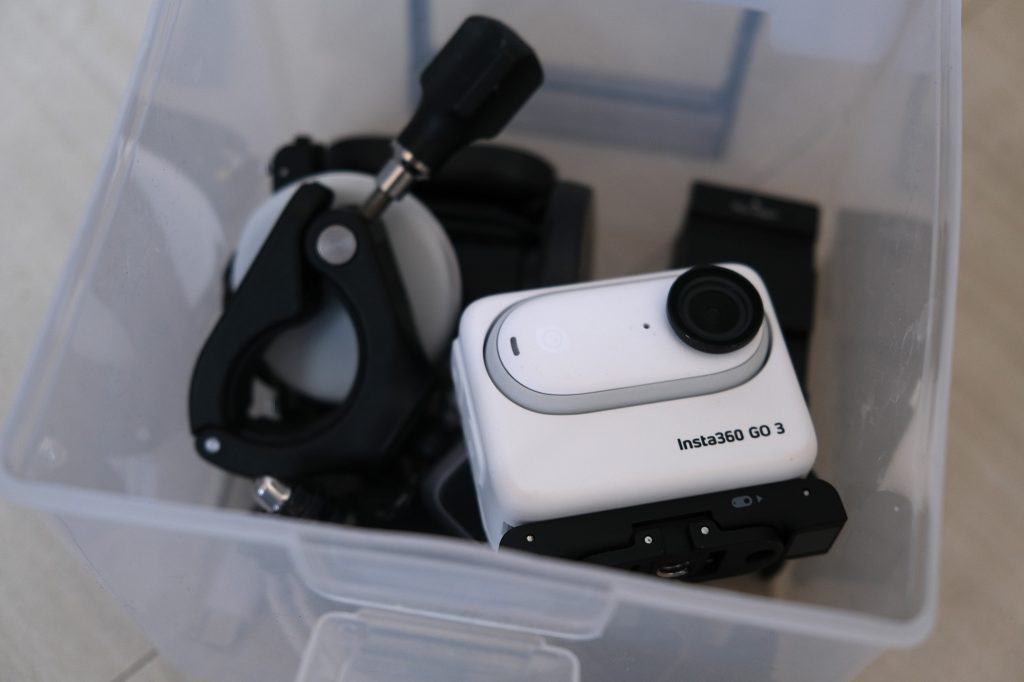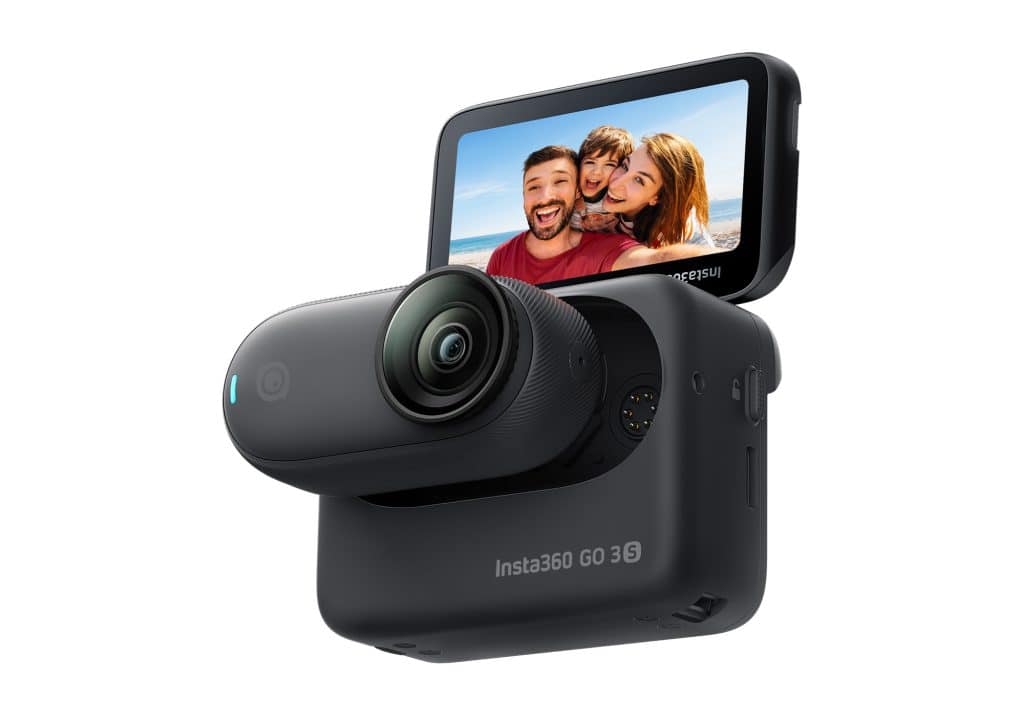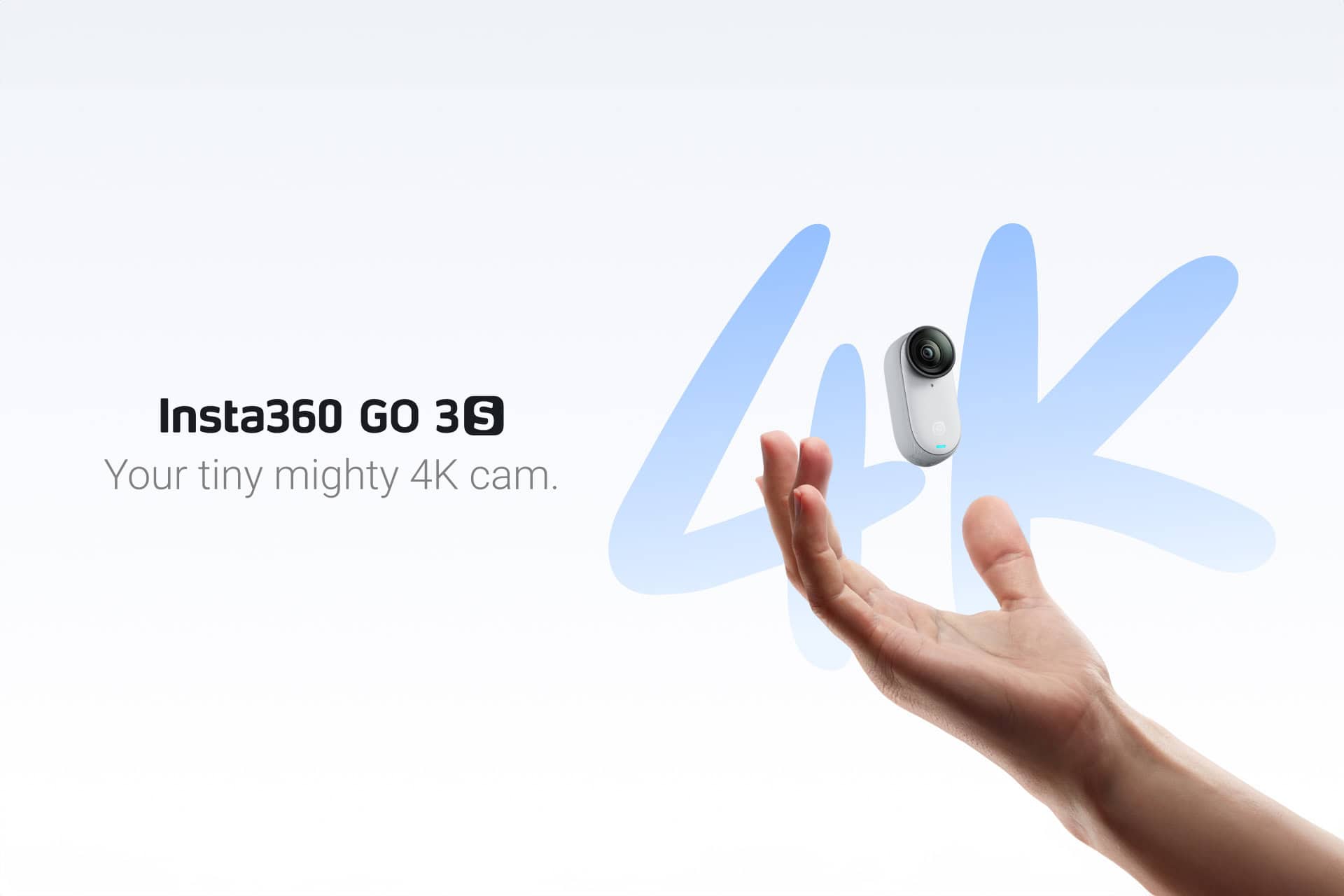For nearly a year, I’ve owned the Insta360 GO 3, a compact and versatile thumb-sized camera that can be magnetically attached to almost any surface or worn as a pendant. When placed in its ‘action pod’ housing, it functions much like a typical GoPro-style action camera.
While the GO 3’s design is undoubtedly clever, allowing it to function as both an action cam and a unique perspective camera, it had some significant limitations that kept me from fully utilizing it.
Enter the Insta360 GO 3S – an upgraded model that seems to address many of the GO 3’s shortcomings, particularly in the realm of image quality.

Image quality improvements including all-important 4K
One of the most significant upgrades in the GO 3S is its ability to shoot in 4K. As someone who almost exclusively captures footage in 4K, this feature alone makes the new model appealing. With the GO 3, I often found myself using other cameras like my DJI Osmo Pocket 3 to avoid upscaling footage, despite the added inconvenience in situations like using it as a wearable camera.

The GO 3 was excellent for niche applications, such as FPV shots while using my mirrorless camera, and it was particularly suited for short-form videos on platforms like TikTok and YouTube Shorts, where quality isn’t as critical.
However, the lack of native 4K was a major limitation for broader applications. And even the maximum 2.7K resolution was a best-case scenario that was unavailable in many modes, including the impressive Freeframe video mode which capped out at 1440p.
The GO 3S addresses this with its capability to record in 4K at 30fps, and unlike the GO 3, the highest resolution is possible on almost all the shooting modes!
| GO 3 | GO 3S | |
| Aperture | F2.2 | F2.8 |
| 35mm Equivalent Focal Length | 11mm | 16mm |
| Photo Resolution | 2560×1440 (16:9) 2560×2560 (1:1) 1440×2560 (9:16) 2936×1088 (2.7:1) | 4000×2250 (16:9) 2880×2880 (1:1) 3968×1472 (2.7:1) 4000×3000 (4:3) |
| Video Resolution | Video 2.7K: 2720×1536@24/25/30fps 1440p: 2560×1440@24/25/30/50fps 1080p: 1920×1080@24/25/30/50fps FreeFrame Video 1440p: 2560×1440@24/25/30/50fps 1080p: 1920×1080@24/25/30/50fps Timelapse 1440p: 2560×1440@30fps TimeShift 1440p: 2560×1440@15/30fps Slow Motion 1080p: 1920×1080@120fps Pre-Recording 2.7K: 2720×1536@24/25/30fps 1440p: 2560×1440@24/25/30/50fps 1080p: 1920×1080@24/25/30/50fps Loop Recording 2.7K: 2720×1536@24/25/30fps 1440p: 2560×1440@24/25/30/50fps 1080p: 1920×1080@24/25/30/50fps | Video 4K: 3840×2160@24/25/30fps 2.7K: 2720×1536@24/25/30fps, 2752×1530@50fps 1080p: 1920×1080@24/25/30/50fps FreeFrame Video 4K: 3840×2880@24/25/30fps 2.7K: 2720×2040@24/25/30/50fps 1080p: 1920×1440@24/25/30/50fps Timelapse 4K: 4000×3000@30fps (Export using Insta360 Studio for optimal quality.) TimeShift 4K: 4000×3000@30fps (Export using Insta360 Studio for optimal quality.) 2.7K: 2720×2040@30fps Slow Motion 2.7K: 2720×1530@100fps 1080p: 1920×1080@120/200fps Pre-Recording 4K: 3840×2160@24/25/30fps 2.7K: 2720×1536@24/25/30fps, 2752×1530@50fps 1080p: 1920×1080@24/25/30/50fps Loop Recording 4K: 3840×2160@24/25/30fps 2.7K: 2720×1536@24/25/30fps, 2752×1530@50fps 1080p: 1920×1080@24/25/30/50fps |
This is really promising.
Insta360 also claim further image quality improvements thanks to a 50% increase in processing power, a new wide-angle lens, and enhancements like:
- New MegaView FOV – Gives a more realistic look with less distortion and straighter, cleaner edges.
- Dolby Vision-Ready – Greater dynamic range and enhanced details thanks to this new HDR technology.
- Slow Motion Upgrades – Make those highlights ultra smooth with up to 200fps at 1080p or 100fps at 2.7K.
Now, there is obviously more to image quality than resolution alone. The GO 3 struggled in low light, and I imagine the same will be true for the GO 3S due to its tiny form factor.
However, if the image quality sees a significant enough improvement, the GO 3S could take the GO series from being that unique and quirky camera to one that is genuinely practical.
Claims and specs alone aren’t enough, so it will be interesting to see how footage between the GO 3 and GO 3S compare in real-world testing.
New Interval Video Mode
A new shooting mode called ‘interval video’ means the GO 3S will automatically power on and shoot a series of clips at regular intervals. I don’t know how much this differs from standard timelapses, so it will be interesting to see what exactly this interval video mode produces.
Other New Features
Here are the other new features over the existing GO 3 model:
- Compatible with Apple Find My – Track your GO 3S using the Apple Find My app
- Easy Switch – Change the aspect ratio on the fly. Twist the camera to go from horizontal to vertical shooting.
- Waterproofing to 33ft – Compared to 16ft with GO 3.
- AI Gesture Control – If the camera’s out of reach, use hand gestures to start/stop shooting or take a photo.
Upgraded accessories and new Quick Reader accessory
The magnet pendant, easy clip and pivot stand that came with the GO 3 have been upgraded. The magnet pendant has improved heat dissipation for comfort, the easy clip has a stronger magnet, and the pivot stand now works on slightly curved surfaces.
There is also the new Quick Reader accessory, which allows you to rapidly back up your footage to a microSD card while charging the camera at the same time. It also enables direct editing on your phone without downloading the files.
Since the GO 3 and GO 3S have built-in memory as opposed to removable storage, this will help alleviate potential memory management issues.

Pricing and Availabilty
Insta360 GO 3S is available for purchase globally from June 13. The Standard Bundle includes the camera and Action Pod, plus a Magnet Pendant, Easy Clip, Pivot Stand, and Lens Guard. Two storage options are available with a 64GB and 128GB model, priced at US$399.99 and US$429.99 respectively. The GO 3S is available in a choice of Arctic White and Midnight Black colors.
For GO 3 users looking to upgrade, GO 3S is compatible with the GO 3 Action Pod, and there’s the option to purchase GO 3S as a standalone camera (no Action Pod or accessories) for just US$239.99 or US$269.99 (64 or 128GB versions).
Will I be getting the Insta360 GO 3S?
There’s no denying the unique perspectives and use cases that only a camera like the GO 3/3S can provide. If the 4K image quality can hold up in my 4K projects, it’s definitely tempting.
However, as someone already juggling an iPhone, DJI Osmo Pocket 3, and a mirrorless camera, it’s hard to say whether the GO 3S would see regular use.
Personally, I’m not sure I can justify buying an upgraded version of a camera I don’t use enough. Knowing I’m recording native 4K definitely feels good, but will it really make to the average viewer? Probably not. That being said, I do like the look of the midnight black model!

Overall, the GO 3S seems like an enticing option for those interested in trying this special type of camera or upgrading from an older GO/GO 2 model. However, existing GO 3 owners will have to think hard about whether the improvements are worth the investment, especially if their usage has been infrequent.
